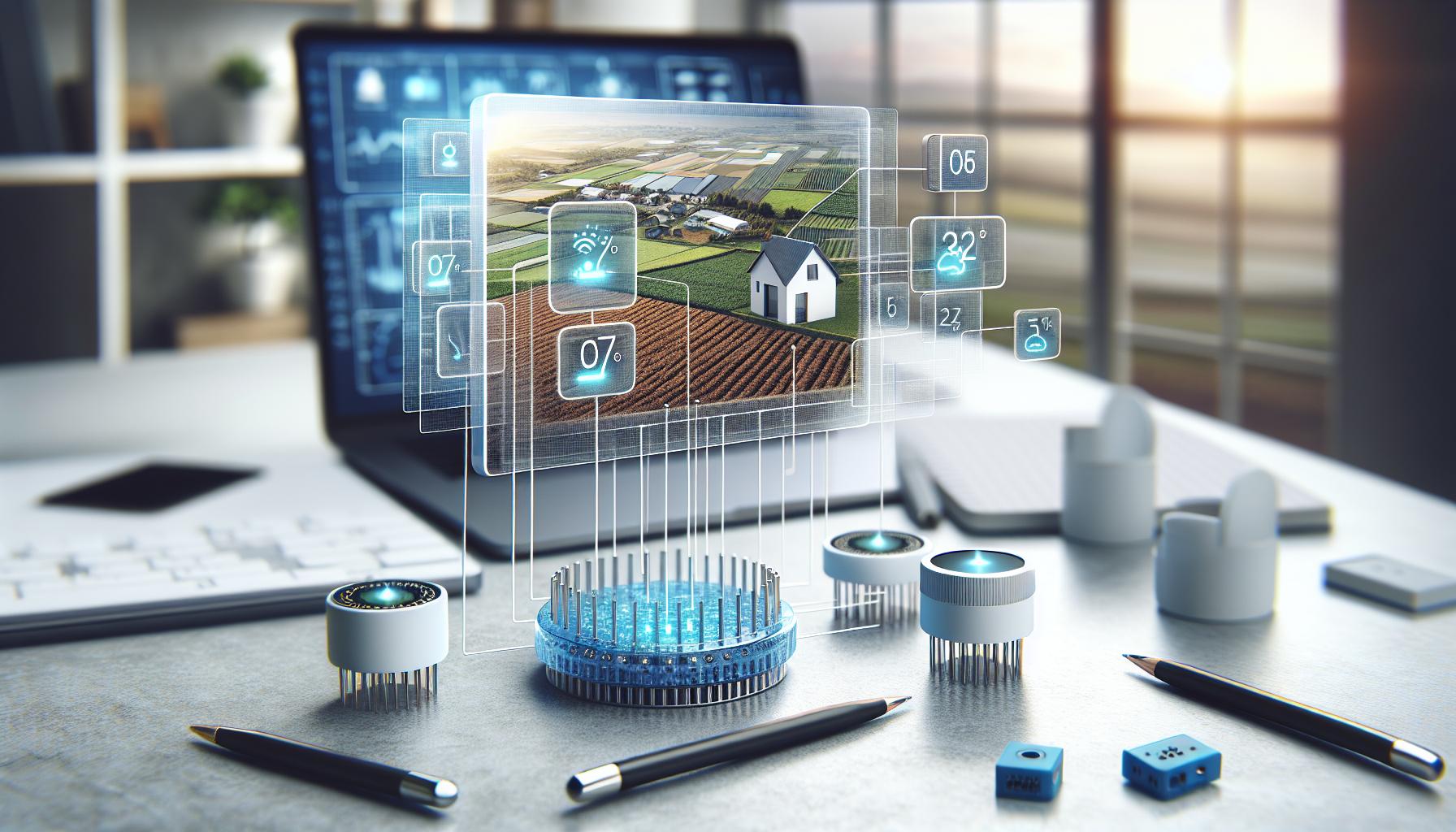In a world where everything from your fridge to your fitness tracker is gathering data, one might wonder: what happens to all that information? It’s like a digital gossip fest where IoT sensors spill the beans about our habits, preferences, and even our secret snack stashes. But don’t worry, it’s not as creepy as it sounds—most of the time.
Once these sensors collect data, it doesn’t just sit around like an uninvited party guest. It gets processed, analyzed, and transformed into actionable insights that can improve everything from smart homes to industrial operations. So, next time you marvel at how your thermostat knows when you’re home, remember that behind the scenes, a whole data-driven orchestra is at work, making your life a bit easier and a lot more connected.
What Happens to the Data Gathered by Iot Sensors?
IoT sensors play a crucial role in data collection, continuously monitoring various environmental factors. They gather parameters, such as temperature, humidity, light levels, and motion, from their surroundings. These sensors are integrated into devices across diverse applications like smart homes, agriculture, and healthcare.
Companies deploy IoT sensors to enhance operational efficiency. By deploying these devices, organizations gain insights that inform decision-making processes. For instance, smart thermostats utilize temperature data to optimize energy consumption, reducing costs and improving comfort.
Data captured by IoT sensors undergoes real-time processing. Advanced algorithms analyze this information, transforming raw data into actionable insights. Such insights empower users to make informed choices in managing resources effectively.
Multiple industries benefit from the integration of IoT sensors. In agricultural settings, soil moisture sensors determine irrigation needs, maximizing crop yield while conserving water. In medical environments, wearable devices monitor patient health in real-time, enabling proactive medical interventions.
Data privacy concerns persist alongside the benefits. Organizations implementing IoT solutions must prioritize the protection of collected data to ensure compliance with regulations. Addressing these concerns leads to increased user trust in IoT technologies.
Innovative applications continue to emerge. Cities utilize IoT sensors for smart traffic management, improving flow and reducing congestion. As the technology evolves, the potential for more intelligent applications grows, enhancing everyday life and industrial operations.
Data Collection Process

IoT sensors form the backbone of the data collection process, continuously gathering information across various sectors. They enable organizations to harness the power of real-time insights to enhance operational efficiency.
Types of Data Gathered
IoT sensors collect diverse types of data, impacting multiple industries. Temperature readings unlock smart home efficiencies, while humidity levels provide critical insights for agricultural practices. Light levels drive automation in commercial buildings, and motion detection enhances security systems. Each category of data informs specific applications, allowing for tailored solutions based on unique environmental factors.
Methods of Data Transmission
Data transmission methods vary, ensuring reliable communication between IoT devices and central systems. Cellular networks enable long-range communication, suitable for remote locations. Wi-Fi networks support high-speed data transfer across compact areas. Low-Power Wide Area Networks (LPWAN) optimize energy usage, making them ideal for battery-operated sensors. These methods ensure continuous data flow, enabling real-time processing and actionable insights for end-users.
Data Storage Solutions

Data gathered by IoT sensors requires efficient storage solutions to maintain its usability. Major approaches for storing this data include cloud storage and edge computing, each offering distinct advantages.
Cloud Storage
Cloud storage provides scalable solutions for vast amounts of data generated by IoT sensors. Companies benefit from this flexibility, allowing them to expand or reduce storage capacity based on demand. Accessibility plays a significant role; stakeholders retrieve data from anywhere with internet connectivity. Cloud service providers also implement robust security measures, which help protect sensitive information. Organizations can utilize analytics tools integrated within cloud platforms for deeper insights into collected data, enhancing decision-making processes.
Edge Computing
Edge computing processes data closer to its source, reducing latency and bandwidth usage. It enables real-time analytics, which improves responsiveness in various applications. For example, manufacturing facilities use edge computing to monitor equipment performance instantly, resulting in quicker interventions. This method minimizes the need for constant data transmission to centralized servers, allowing for efficient data handling. Scalability remains crucial; businesses can optimize deployment to fit specific needs without overhauling their entire infrastructure. Additionally, edge computing enhances data security by shifting sensitive processing away from centralized cloud environments.
Data Processing and Analysis

Data gathered by IoT sensors undergoes detailed processing and analysis, creating a foundation for actionable insights.
Real-Time Processing
Real-time processing enhances responsiveness across various applications. Algorithms analyze data instantly, allowing devices to respond quickly to environmental changes. For instance, smart thermostats adjust temperatures immediately based on feedback from sensors. This swift processing boosts operational efficiency. It generates alerts in healthcare environments, where monitoring vital signs triggers appropriate responses from medical staff. Anomalies detected by sensors signal potential issues that require immediate attention. Industries leveraging real-time processing improve productivity, ensuring optimal resource management and timely decision-making.
Historical Data Analysis
Historical data analysis plays a vital role in strategic planning. By aggregating data over time, organizations identify trends and patterns that inform future actions. Companies use this analysis to optimize energy consumption, adjusting strategies based on past usage data. Predictive analytics helps anticipate equipment maintenance needs, preventing costly downtimes. In agriculture, examining weather and soil data from previous years creates better crop management strategies. Historical insights empower businesses to enhance their operations, ensuring a competitive edge in rapidly changing markets.
Applications of IoT Data
IoT data supports a range of applications across various sectors, enhancing efficiency and decision-making.
Smart Homes
Smart homes utilize IoT data to create environments that prioritize comfort and convenience. Sensors collect temperature, humidity, and occupancy data, allowing devices like smart thermostats to adjust settings in real-time. Homeowners benefit from energy management systems that reduce costs and improve efficiency. For instance, automated lighting systems adapt based on natural light availability, optimizing electricity usage. Security systems also leverage IoT data for monitoring, sending alerts to homeowners if unusual activity occurs. This seamless integration enhances everyday living, making homes more responsive to residents’ needs.
Industrial IoT
Industrial IoT applications leverage data to boost productivity and operational efficiency. Factories implement sensors to monitor machinery performance, providing insights that inform preventive maintenance strategies. By analyzing equipment data, organizations can reduce downtime and extend the lifespan of assets. Supply chain management also relies on IoT data for optimizing inventory levels and tracking shipments. Real-time monitoring improves resource allocation and minimizes waste. In addition, safety protocols benefit from IoT applications that detect hazardous conditions early, ensuring a safer workplace. This comprehensive utilization of data positions industries for a competitive advantage in today’s market.
Challenges and Considerations
IoT technology introduces several challenges that organizations must navigate to maximize the benefits of data collected by sensors. Data security and privacy concerns are two prominent areas that require thorough attention.
Data Security
Securing data generated by IoT sensors is critical for organizations. Breaches can lead to unauthorized access to sensitive information, resulting in financial losses and damage to reputation. Solutions encompass encryption methods that protect data during transmission and storage. Regular software updates also play a key role in safeguarding devices from vulnerabilities. Implementing robust authentication protocols ensures that only authorized users access the data. Overall, a comprehensive data security strategy protects against cyber threats while fostering user confidence in IoT technologies.
Privacy Concerns
Privacy concerns arise as IoT devices gather personal information through continuous monitoring. Users often feel apprehensive about how their data is utilized and shared. Clear data policies are essential for organizations to build trust. Transparency in data collection practices reassures users regarding their rights and the purpose of data usage. Compliance with regulations, such as GDPR, further emphasizes the importance of protecting individual privacy rights. Organizations must prioritize ethical considerations to create a positive impact while leveraging the advantages offered by IoT technology.
Conclusion
The data gathered by IoT sensors plays a pivotal role in transforming everyday experiences and industrial practices. By processing and analyzing this information, organizations can make informed decisions that enhance efficiency and improve user satisfaction.
As technology evolves, the integration of IoT data will continue to drive innovation across various sectors. However, prioritizing data security and privacy remains essential to maintain user trust and comply with regulations.
Embracing these advancements while safeguarding personal information will define the future of IoT, empowering users and businesses alike to harness the full potential of connected devices.



